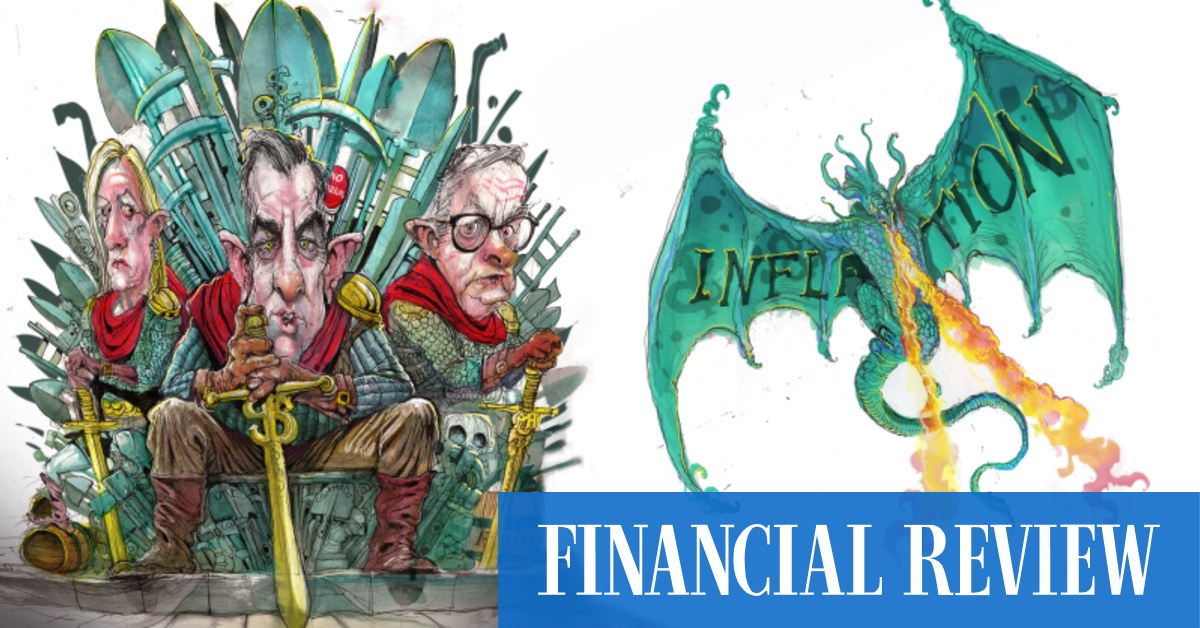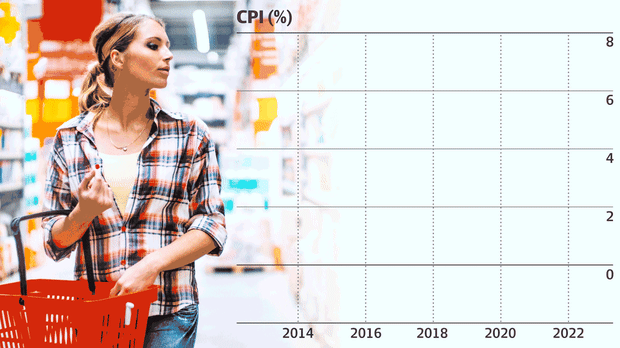
[ad_1]
Economists said both would pile further pressure on the RBA’s cash rate.
National Australia Bank has updated its forecast for the official interest rate to rise from the current 2.6 percent to 3.6 percent in the first half of next year, more than half a percentage point from its previous forecast.
“Inflationary pressures have clearly widened beyond elevated commodity inflation,” said NAB chief economist Ivan Colhoun, adding that because of the CPI surprise, the RBA would discuss a 50 basis point hike in November.

cpi AFR
ANZ and the Commonwealth Bank both upgraded their cash forecasts by 0.25 percentage points. CBA now expects a top rate of 3.1 percent, while ANZ forecasts 3.85 percent.
Economists said a return to a 0.5 percent increase at the Reserve Bank’s November board meeting was a possibility, but the RBA would probably prefer to increase rates more often than go back to bigger inflation.
Dr Chalmers said Wednesday’s inflation result was in line with the Treasury’s expectation in the budget, although he acknowledged there were further risks to the peak level.
“What we saw [in Wednesday’s result] doesn’t fundamentally change our expectations, but the combination of electricity and natural disasters has the ability to be a little worse than what we anticipated,” he said.
ABS program manager Michelle Marquardt said recent increases in the consumer price index (CPI) outpaced any other results since the GST was introduced in 2000, and underpinned the fastest inflation since June 1990.
Gas, electricity, and construction costs
Annual gas price reviews across the states and territories saw higher wholesale gas prices passed on to consumers in the September quarter. Overall gas prices rose 10.9 percent, while construction costs rose 3.7 percent.
Electricity prices rose 3.2 per cent, less than the 20 per cent forecast in Tuesday’s budget, which Ms Marquardt said was due to state government subsidies in Western Australia, Queensland and Canberra.
“Excluding the impact of these schemes, electricity would have risen by 15.6 percent in the quarter,” she said.
The budget forecasts electricity bills to rise by 20 per cent in the second half of 2022 and a further 30 per cent in 2023-24, for a total of 56 per cent.
Dr Chalmers laid the blame for the pain squarely at the feet of Russian President Vladimir Putin and his illegal invasion of Ukraine, which has sent global energy prices to record levels since February.
“War in Europe has wreaked havoc on energy markets,” he said, which added to inflation and would be felt “most acutely at the kitchen table.”
The Treasurer has marked an aggressive deregulation in the energy markets to deal with the growing hit to household budgets.
With inflation in the September quarter stronger than expected, the figures in Tuesday’s budget could already be out of date.
Worse case
The budget forecast inflation will peak at 7.75 percent this quarter, although the Treasury sounded a note of caution that “significant risks remain to the inflation outlook,” which would affect households.
For example, in a higher inflation scenario, where annual price growth peaks 1 percentage point above the current forecast at 8.75 percent, the budget expects consumers to pull back more on discretionary spending.
“Higher inflation could, for example, reflect a large shock to input prices or larger ‘two-round’ effects as businesses go through input cost pressures,” Treasury said in the budget papers.
“Under this scenario, more persistent inflation is likely to lead to a higher peak in interest rates than currently expected. Higher inflation and interest rates would lower real household disposable income.”
This would shave about 0.25 percentage points off economic growth in 2022-23, and halve growth the following year from 1.5 percent to just 0.75 percent, signaling a likely recession.
Another 100,000 people would join the job queue by June 2024, bringing the total to about 250,000, pushing the unemployment rate from the current nearly 50-year low of 3.5 percent to 5.25 percent.
[ad_2]
Source link
